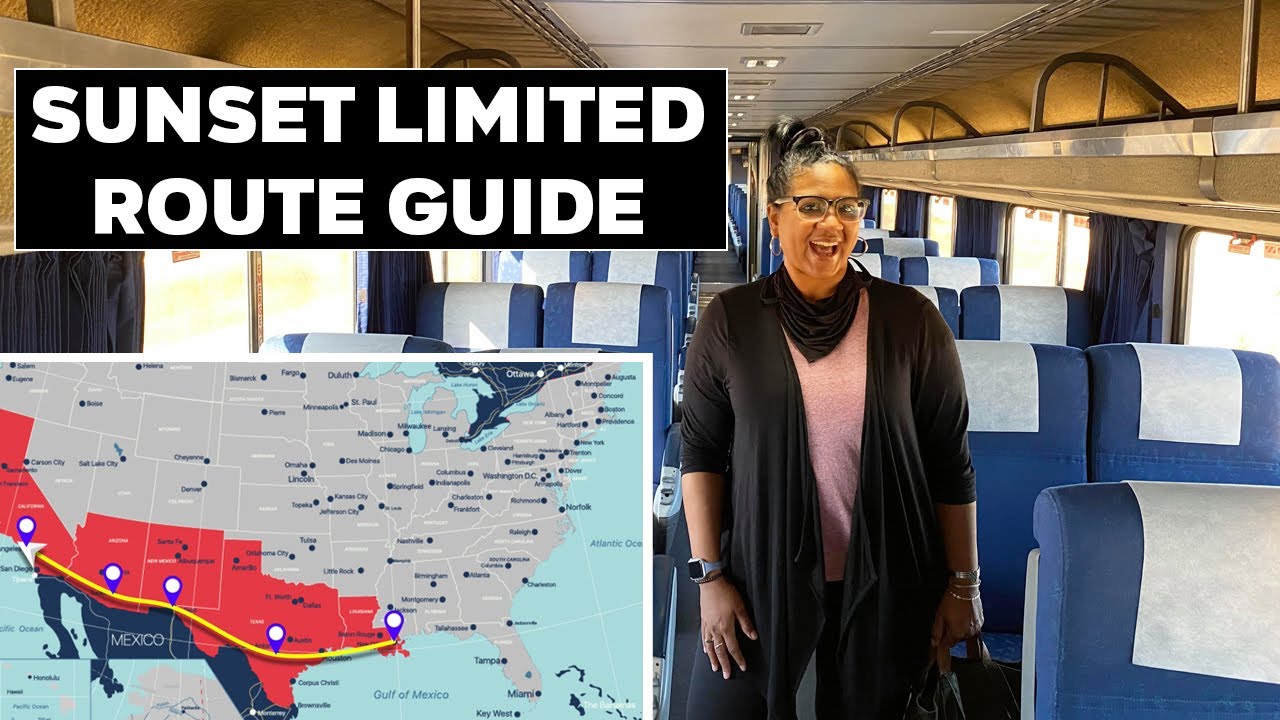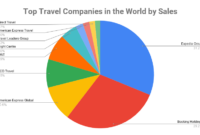Amtrak Trip Planner simplifies the process of planning and booking Amtrak train journeys. This guide delves into its functionality, user experience, integrations with other services, data presentation, and mobile application aspects, offering a comprehensive overview of this valuable tool for travelers. We’ll explore its strengths, weaknesses, and potential for future improvements, providing insights for both users and developers.
From inputting travel details and exploring various trip options to understanding pricing and interpreting schedules, we’ll cover the entire user journey. We’ll also examine the planner’s integration with other travel services and discuss how data visualization impacts the user experience. The aim is to provide a complete picture of the Amtrak Trip Planner, highlighting its capabilities and areas for potential enhancement.
Amtrak Trip Planner Functionality
The Amtrak Trip Planner is a user-friendly online tool that simplifies the process of planning and booking Amtrak train travel across the United States. It offers a comprehensive suite of features designed to help travelers find the best routes and fares for their needs. The planner allows users to search for train schedules, compare different travel options, and purchase tickets directly, all in one convenient location.
Inputting Travel Details
Users begin by entering their origin and destination cities or stations. The system offers an autocomplete function to assist with accurate entry. Next, users specify their desired travel dates, including the departure and return dates if applicable. They can also indicate the number of passengers and any preferences regarding seating, such as window or aisle seats. Advanced options may allow for specifying preferred train times or selecting specific train numbers if desired.
Trip Options Presented
Once the travel details are entered, the Amtrak Trip Planner displays a list of available routes and schedules. This list may include direct trains or those requiring connections. For connecting routes, the planner clearly indicates the layover times and locations. Different classes of service are also presented, allowing users to compare prices and amenities. These classes might include Coach, Business Class, Acela First Class (on Acela trains), and others, each with varying levels of comfort and service. The planner displays the duration of each trip option, the price, and often includes information on available amenities such as Wi-Fi and onboard dining.
Step-by-Step Ticket Booking Guide
1. Enter Travel Details: Begin by entering your origin and destination, travel dates, and number of passengers in the designated fields.
2. Review Trip Options: Examine the presented options, comparing prices, travel times, and amenities.
3. Select a Trip: Choose the trip that best suits your needs and click to select it.
4. Passenger Information: Provide the required passenger information, including names, ages, and contact details.
5. Payment Information: Enter your payment information securely using the provided options.
6. Review and Confirm: Carefully review all the details of your booking before confirming your purchase.
7. Receive Confirmation: After successful payment, you will receive a confirmation email containing your ticket details and a unique reservation number.
Amtrak Ticket Types Comparison
| Ticket Type | Features | Price | Refundability |
|---|---|---|---|
| Saver Fare | Lowest price, non-refundable, limited changes allowed | Lowest | Generally Non-Refundable |
| Value Fare | Moderate price, some flexibility with changes, partial refund may be available | Mid-range | Partially Refundable (conditions apply) |
| Flexible Fare | Highest price, full refund available, significant flexibility with changes | Highest | Fully Refundable (conditions apply) |
| Business Class | Enhanced comfort, complimentary amenities, higher priority boarding | High | Refund policy varies depending on fare rules |
User Experience and Interface
The Amtrak trip planner’s user experience is a complex interplay of functionality and design. While the core functionality of finding routes and booking tickets is generally effective, the interface could benefit from significant improvements to enhance user-friendliness and overall satisfaction. A more intuitive design would lead to a smoother, more enjoyable travel planning experience.
The current interface presents a functional but somewhat dated aesthetic. While straightforward in its layout, it lacks the modern visual appeal found in many competing travel booking websites. The information architecture, while logically structured, could be more visually engaging and easier to navigate, especially for users unfamiliar with the Amtrak system.
Visual Design Strengths and Weaknesses
The Amtrak trip planner’s strength lies in its clear presentation of essential information: departure and arrival times, train numbers, and prices. However, the visual design is somewhat cluttered, particularly on smaller screens. The use of color is inconsistent, and the overall aesthetic feels somewhat uninspired compared to more modern travel booking platforms. A more streamlined design with improved use of whitespace and a consistent color palette would significantly improve the visual appeal. For example, using a consistent font family throughout the site, avoiding jarring color combinations, and implementing better visual hierarchy would greatly improve the overall look and feel.
Navigation and User Experience Improvements
Several improvements could enhance navigation and the overall user experience. A more prominent display of filtering options, such as price range, departure times, and number of stops, would allow users to quickly refine their search results. Implementing a more intuitive map integration, allowing users to visually see the route and potential layovers, would be beneficial. Adding interactive elements, such as clickable train schedules on the map, would enhance the user experience. Finally, incorporating visual cues, like progress indicators during the booking process, would provide users with feedback and reassurance.
Improved Search Results Page Mock-up
Imagine a search results page with a cleaner layout. The top would display a concise summary of the trip: origin and destination, dates, and the number of results found. Below, individual train options would be presented in clear, visually distinct cards. Each card would feature a large, easily readable train number, departure and arrival times, and the total travel duration. A prominent price would be displayed next to a clear indication of the class of service (e.g., coach, business class). A small map icon next to each train would allow users to quickly view the route on a simplified map. The entire page would be responsive, adapting seamlessly to various screen sizes. The color palette would be consistent, utilizing Amtrak’s branding but with a more modern and visually appealing application. Whitespace would be used effectively to avoid a cluttered appearance.
Accessibility Features
Amtrak’s trip planner should prioritize accessibility features for users with disabilities. This includes providing alternative text for all images, ensuring sufficient color contrast between text and background, and offering keyboard navigation for all interactive elements. Support for screen readers is crucial, ensuring that all information is accessible to visually impaired users. The website should also adhere to WCAG (Web Content Accessibility Guidelines) standards to guarantee usability for a wider range of users. Examples of specific features could include adjustable font sizes, customizable color schemes, and the option to download trip details in alternative formats like PDF or plain text.
Integration with Other Services
The Amtrak trip planner’s effectiveness hinges significantly on its ability to integrate seamlessly with other travel-related services. A robust integration strategy enhances user experience by providing a comprehensive and convenient travel planning solution, all within a single platform. This section will explore the current integrations, their advantages and disadvantages, comparisons with competitors, and potential future enhancements.
Currently, the Amtrak trip planner offers limited direct integration with external services. While it provides basic mapping functionality to display station locations, it lacks deeper integration with hotel booking platforms, ride-sharing services, or other transportation options that might precede or follow an Amtrak journey. This contrasts sharply with some competitors who offer more holistic travel planning experiences.
Current Integrations and Their Impact
The existing map integration, while functional, is basic. It primarily serves to locate stations, offering limited contextual information about surrounding amenities or alternative transportation options to reach the station. The benefit is straightforward: users can easily visualize station locations. However, the drawback is a lack of integration with real-time traffic data or alternative route suggestions, which could be crucial for planning efficient travel to and from the station. This limits the planner’s usefulness as a comprehensive travel solution.
Comparison with Competitor Integrations
Competitors such as Google Trips (now discontinued but illustrative) and various European rail booking websites frequently integrate with a broader range of services. These integrations often include real-time traffic information overlaid on maps, recommendations for nearby hotels and restaurants, and even the ability to book connecting transportation (buses, taxis, etc.) directly through the platform. This offers a more seamless and complete travel experience. Amtrak’s current offering pales in comparison, lacking the sophisticated interconnectedness of these more comprehensive travel planners.
Examples of Enhanced Integration and User Experience
Imagine a scenario where, after selecting an Amtrak route, the trip planner automatically suggests nearby hotels, displaying prices and availability directly within the itinerary. Furthermore, integrating with a ride-sharing service could allow users to book a ride to the station directly through the planner, providing a seamless transition between different modes of transport. Real-time traffic information displayed alongside the station location could also help users plan their arrival time more effectively, avoiding potential delays. These improvements would significantly enhance the user experience by streamlining the entire travel process.
Potential Future Integrations
A list of potential future integrations to enhance the Amtrak trip planner includes:
Several key integrations could dramatically improve the user experience. These are not mutually exclusive and should be considered as complementary enhancements.
- Hotel Booking Integration: Direct integration with major hotel booking sites (e.g., Expedia, Booking.com) to display hotel options near stations, filtering by price, rating, and amenities.
- Ride-Sharing Service Integration: Allow users to book rides to and from stations via Uber, Lyft, or other services directly within the planner.
- Real-Time Traffic Integration: Display real-time traffic conditions on the map to help users plan their arrival at the station, avoiding potential delays.
- Public Transportation Integration: Integrate with local public transportation schedules to provide multi-modal journey planning options, showing connections between Amtrak and buses, subways, etc.
- Luggage Delivery Service Integration: Allow users to book luggage delivery services directly through the planner, eliminating the need to carry luggage on connecting journeys.
Data Visualization and Information Presentation
The Amtrak Trip Planner excels at presenting complex travel data in a user-friendly manner. Clear visual cues and intuitive organization help users quickly understand pricing, schedules, and potential disruptions, ultimately streamlining the trip planning process. The effectiveness of this visualization directly impacts user satisfaction and the overall utility of the tool.
Pricing Information Presentation
Amtrak’s trip planner displays pricing information clearly, typically presenting the fare options in a list format, often sorted by price. Each fare option usually includes details such as the specific class of service (e.g., coach, business class), any included amenities, and the total cost. Users can easily compare different fare options to find the best fit for their budget and travel preferences. This pricing structure is usually presented alongside the schedule information, allowing for simultaneous consideration of cost and timing. For example, a user might see options like “Coach: $75,” “Business Class: $150,” clearly distinguishing the price differences and associated service levels.
Train Schedule and Delay Display
Train schedules are displayed in a timetable format, typically listing the departure and arrival times for each leg of the journey. Potential delays are usually indicated using visual cues such as color-coding (e.g., green for on-time, yellow for minor delays, red for significant delays) or clear textual notifications. The system often integrates real-time data, updating the schedule and delay information dynamically as conditions change. This dynamic display ensures users receive the most current information. For instance, a user might see “Departure: 8:00 AM (On Time)” next to one leg of their trip, while another leg might display “Departure: 11:00 AM (Delayed 30 minutes)”.
Interpreting Trip Planner Results
The trip planner results page presents a concise summary of the selected trip, typically including a map showing the route, a detailed schedule with departure and arrival times at each station, the total travel time, and the total fare. Users can easily understand the key aspects of their trip at a glance. Detailed information for each leg of the journey is readily available, often accessible by clicking or expanding specific sections. For example, a user might see a summary showing the total travel time as “5 hours 30 minutes,” the total cost as “$120,” and a clear visual representation of the train route on a map.
Sample Trip Itinerary
Let’s consider a trip from New York Penn Station (NYP) to Boston South Station (BOS).
| Station | Arrival Time | Departure Time | Train Number |
|————–|————–|—————-|————–|
| NYP | | 9:00 AM | 123 |
| New Haven | 10:30 AM | 10:45 AM | 123 |
| Boston South | 12:15 PM | | 123 |
This simplified table shows the key information a user would expect to see. More detailed information, such as platform numbers and potential delays, would be provided within the full trip planner interface.
Suggestions for Improving Information Presentation
Adding interactive elements, such as clickable station names that reveal detailed station information (e.g., amenities, nearby transportation options), would enhance the user experience. Furthermore, incorporating visual cues for the type of train (e.g., different icons for regional, express, etc.) would improve clarity. Finally, offering alternative routes with clear comparative information (travel time, cost) would provide users with more options and control over their travel plans.
Mobile Application Aspects (if applicable)
Amtrak’s trip planning functionality extends beyond the desktop website, offering a dedicated mobile application for on-the-go planning and booking. This allows users to access trip information and manage their travel arrangements conveniently from their smartphones or tablets. A comparison of the desktop and mobile versions reveals both similarities and key differences in functionality and user experience.
The mobile application mirrors many features of the desktop website, providing users with the ability to search for routes, view schedules, compare prices, and book tickets. However, the mobile interface is optimized for smaller screens and touch-based interaction, necessitating a streamlined design and intuitive navigation. This optimization, while generally successful, presents both advantages and limitations.
Desktop and Mobile Version Comparison
The desktop version offers a more comprehensive display of information, allowing users to easily compare multiple routes simultaneously and access detailed maps and station information. The mobile app prioritizes a simplified, step-by-step booking process, sacrificing some visual richness for ease of use on smaller screens. For example, the desktop version might display a comprehensive map with multiple route options visually overlaid, whereas the mobile app might present these options sequentially, with tappable links to view more detailed map information for each. This trade-off reflects the different contexts of use: the desktop version allows for more in-depth planning and comparison, while the mobile app prioritizes efficient booking.
Mobile App Usability
The usability of the Amtrak mobile app is generally positive, receiving favorable reviews for its ease of navigation and straightforward booking process. However, areas for improvement exist. Some users report difficulties with the app’s search functionality, particularly when searching for routes with multiple stops or complex travel requirements. Another common critique relates to the app’s handling of potential errors or unexpected issues during the booking process. Clearer error messages and more robust error handling would significantly improve the user experience.
Mobile-Exclusive Features
While the core functionality is largely consistent across platforms, the mobile app offers some features tailored to the mobile context. For example, the app may include mobile-specific payment options, or it might provide features like real-time train tracking and push notifications for delays or schedule changes. This integration of real-time data is a key advantage of the mobile app, enhancing the user experience by providing timely and relevant information.
Mobile Experience Enhancements
Several improvements could further enhance the mobile experience. Implementing offline functionality, allowing users to access previously searched routes and schedules even without an internet connection, would be a significant benefit. Adding a feature for saving frequently used routes or destinations would also streamline the booking process. Finally, incorporating more advanced accessibility features, such as larger text options and improved screen reader compatibility, would make the app more inclusive and user-friendly for a wider range of users.
Mobile App Booking User Flow
A typical user flow for booking a ticket on the Amtrak mobile app might involve the following steps:
1. Home Screen: The user launches the app and is presented with a search bar and options for recent searches or saved routes.
2. Route Search: The user enters their origin and destination, travel dates, and desired travel class.
3. Results Display: The app displays available routes, including train numbers, departure and arrival times, and prices.
4. Route Selection: The user selects their preferred route.
5. Passenger Information: The user enters passenger details, including names, ages, and any required accessibility information.
6. Payment: The user selects their payment method and completes the transaction.
7. Confirmation: The user receives a confirmation message and ticket details, which may be accessible offline.
End of Discussion
The Amtrak Trip Planner offers a valuable service for those seeking convenient and efficient train travel planning. While its current functionality is robust, improvements to the user interface, data presentation, and mobile application could further enhance the user experience. Future integrations with additional travel services hold the potential to create a more comprehensive and integrated travel planning platform. By addressing the identified areas for improvement, Amtrak can solidify its position as a leading provider of online train travel booking services.




